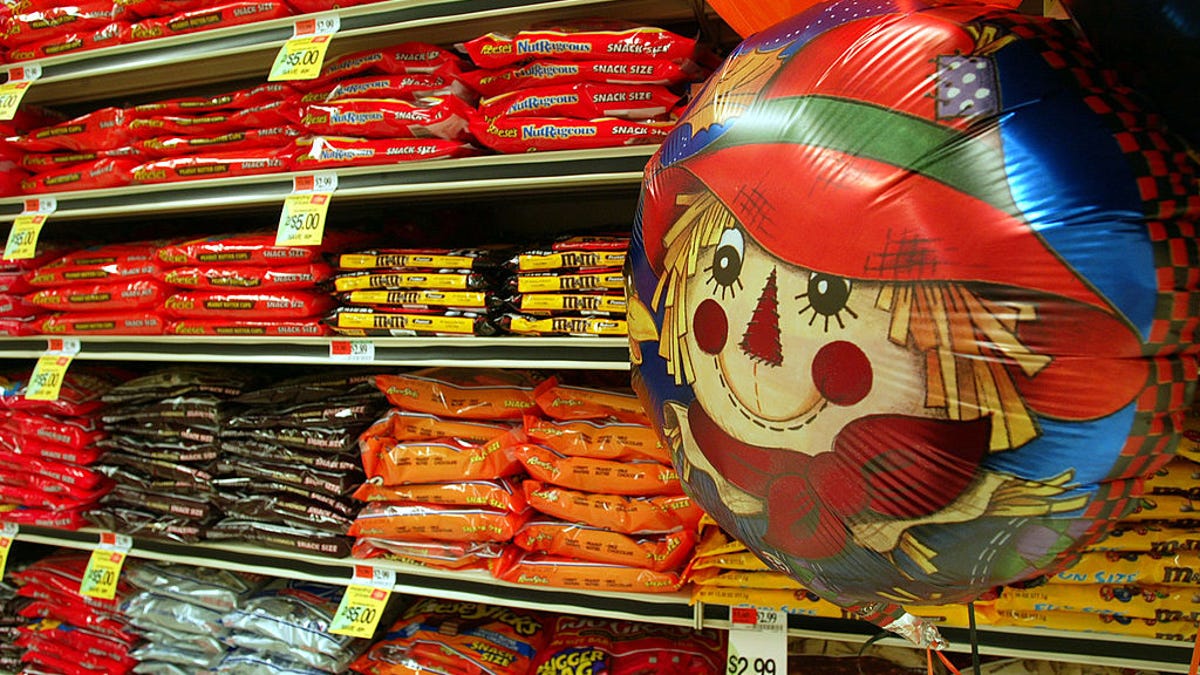Halloween Candy and 5 Other Supermarket Items That Are More Expensive or Harder to Find
Several factors continue to fuel price hikes or shortages on everyday items like bread, turkey and butter.

Rising demand and less availability of sugar and flour have caused candy prices to soar.
Halloween is almost here, but the price of candy might be the scariest thing about the holiday. In September, the cost of a bag of trick-or-treat sweets shot up 13.1% since last year, according to the Bureau of Labor Statistics' Consumer Price Index report.
That's the biggest year-over-year jump in candy prices since the CPI began recording them, NPR reported.
The candy crunch joins shortages and price hikes of other grocery store staples, including bread and butter. Much of this is a result of supply chain issues and the ongoing war in Ukraine. Some of it is also aided by droughts or higher temperatures linked to climate change.
Right now, it's unclear when prices and supplies for many products will return to normal. Below, we've tallied half a dozen items facing higher prices and dwindled supplies.
For more on shortages, learn how your favorite supermarket items may be hit by "shrinkflation" and how much cheaper generic store brands really are.
1. Halloween candy
In July, Hershey CEO Michele Buck warned that the company "will not be able to fully meet consumer demand" for Halloween candy, according to CNN. Hershey's saw a double-digit increase in demand between 2021 and 2022 and had to prioritize manufacturing its regular products over Halloween- and Christmas-themed treats.
By October, though, Hershey said talk of a shortage was premature.
"We'll all still be able to enjoy our favorite Hershey treats this Halloween," a spokesperson told USA Today "Those treats may just be dressed up in everyday packaging vs. Halloween-inspired or seasonal designs."
So you can find candy, but it'll cost more: The Bureau of Labor Statistics reported that, in June, Hershey increased its prices by 14%. The candy also fell prey to "shrinkflation," with Hershey reducing the size of its 18-ounce packs of dark chocolate Kisses by almost 2 ounces while keeping the retail price the same, according to The Take Out.
This summer, Nestle also bumped its prices by 9.8% and Mars by 7%, according to the Consumer Price Index.
The cost of candy bars and chewing gum went up 2% overall in August alone, thanks to supply chain issues and the increase in the price of sugar (up over 17%) and flour (up more than 24%).
2. Turkeys
Turkey prices have soared 75% since last year.
Shoppers hitting supermarkets for Thanksgiving turkeys have already encountered rising prices, thanks to the ongoing avian flu epidemic that has resulted in the killing of millions of birds.
According to the US Department of Agriculture, the price per pound of an 8- to 16-pound turkey for the week of Oct. 24 is $1.99, a 73% increase from 2021.
3. Baby formula
After a several-month shutdown of its Sturgis, Michigan, plant manufacturing baby formula, Abbott Nutrition began producing formula again this summer but cautioned it could take weeks for formula to arrive on shelves. The initial closure created major baby formula shortages across the US.
In October, Abbot then announced a recall of some of its 2-ounce ready-to-feed liquid products and formulas after a "small percentage" of the bottles at a facility in Columbus, Ohio, may not have been sealed properly.
An October survey by the US Census Bureau found that supply is still constrained: Nearly 35% of families with infants under 1 year old who use formula had difficulty obtaining formula in the last 7 days.
4. Bread
The war in Ukraine has affected the international grain market.
Russia and Ukraine are the world's largest wheat exporters, responsible for 30% of the global wheat supply. Russia's ongoing war against Ukraine threatens that supply and could affect staples like flour, pasta, pretzels and even bread, which has already seen an increase in price across Europe.
The average price of bread in September 2022 was $1.75 per pound versus $1.58 in 2021.
5. French mustard
Climate change and the crisis in Ukraine have caused Europe to experience a shortage of the popular condiment that has caused some stores to cap purchases.
6. Butter
The average price of butter was $3.67 per pound in January, according to the Federal Reserve Bank of St. Louis. By September, it was up to $4.70 per pound. Analysts say the rising cost of feed and labor shortages on dairy farms are the chief culprits.
With big baking holidays like Christmas and Thanksgiving right around the corner, "prices are not going to come down," Iowa State University economist Scott Grawe told CNBC.
Read on: What Is 'Shrinkflation' and What Does it Mean for Your Favorite Supermarket Items?



